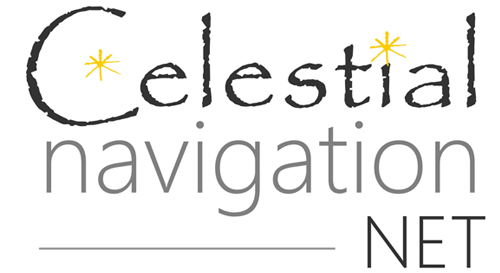Reader Page
Reader and veteran Keal Madsen sent this. If you can help him out with free charts or nav tools, email him at newgfarms [at] gmail.com
I am the son of 8th generation Navy (1953-1975), 13th generation navy on my mother’s side. Grampa Blaizdale a ship’s captain, fought in the war of 1812, “The second revolution.”
I myself, served proudly on board the U.S.S. Saratoga CV60 on the flight deck(1985-1988), during the Cadufie incident in 1985 under Pres. Reagan. I twice stood a crow’s nest watch 15 decks up and fell in love with the GRAND MISTRESS herself, the sea. The first time in the nest, I must have been paying my dues. The waves in the storm through me from port to starboard like a toy in a dog’s mouth. The next time I stood that watch there was not one cloud in the night sky. As I looked forward and aft, port and starboard nothing was about not a ship, not a light, nor a hint of land. the sea was still like a sheet a glass but for a six naut. wake. That’s when I saw what I spent 4 hours in hell for the week before. They called it “the crystal ball” from horizon to horizon three hundred sixty degrees and not just over my head or to the sides but even under the ship herself, STARS ! Every star seen by every man before me!
It was just as the boatswain mate had said. As an Air dale I didn’t believe him, and I’m so glad I saw it for myself. It was a once in a lifetime thing. As was seeing my father’s name engraved in a bar in Spain from 7 years before I was born (the bar part, wasn’t the shocker).
Before my father died he ask me to spread his ashes at sea. I need to not mention the rest of his request, you might think me rude. I have started to learn to sail, as I have sailed twice with instructors and once solo. He spent his last working years sailing a rich man’s Ketch up and down the west coast (his favorite). I have found pleasure in a few of my father’s hobbies; Sailing, Big bikes, scuba diving, drinking, and dancing. I quit drinking at 27 . I had to stop dancing after I lost the use of my left leg in bike wreck at 32. I still scuba, and I will live aboard my own sloop some day soon.
Driving a cab in this small town doesn’t bring in the kind of money one might need to buy the expensive electronic navigation tools that most people now rely on. I have just bought my first sextant and telescope. I’m looking for a book that will teach me celestial navigation. His ashes will bring me to Virginia, key west (where I started), California, Guam (he danced in a movie called “south Pacific”), Japan, Vietnam, Australia, the Mediterranean sea, and finally to Rhode Island where he and mom met. No one man can only sail during the light of day. Perhaps you might now of that one book that will be a one time purchase explaining every thing I will need to know for navigating through this two year trip (I may hate sea food at the end). Also if there is any kind of place I might get donated charts and / or navigation tools (I sure there is something I’ll need I don’t know about) for the at sea burial of my father; ADJ Chef petty officer Walter James Madsen the 3rd, a proud Navy Seal and U.S. sailor of 22 years.
Thank you for your time and consideration
Keal A. Madsen
Two readers have a new website with cool interactive spreadsheets for celestial navigation, for a very small, reasonable fee.
Reader Bill Arden writes:
Here is a contribution to your reader page. As a beginner in celestial navigation, I’ve created a rather explicit form for use in recording my observations and doing the calculations (a physics teacher of mine once described a text as “a road map on a scale of one-to-one” – that’s what I’ve tried for here).
The first page includes space in which to calculate Hc & azimuth directly; this has the advantage that the true assumed position can be used without rounding. The second page, which I added last week as I began to learn about H.O. 249, is a simple form for using those tables.
These worksheets are HERE as Word documents. Thanks, Bill!
Cool tips from reader Greg Rudzinski – thanks!!!
USING GRAPH PAPER TO CONSTRUCT PLOTTING SHEET
Step #1 Space latitudes such that one square on the graph paper equals one minute of latitude.
Step #2 Determine square spacing for longitude by multiplying cosine of latitude by the number of latitude minutes in the grid.
COMPASS CHECK USING PUB 249 TECHNIQUE
Check the compass by comparing a low altitude bearing of the sun to an azimuth that is extracted from Pub. 249 using declination, latitude, and altitude as entries. Acceptable accuracy can be obtained by entering with whole degrees of declination,latitude, and altitude (interpolation is omitted).
USING STARFINDER TO DETERMINE LOCAL HOUR ANGLE OF ARIES
A starfinder can be used in reverse to determine an approximate local hour angle of aries by observing a prominent body such as SIRIUS and entering the altitude and approximate azimuth using the appropriate latitude template.
Once the starfinder is set by observation of a prominent body then an approximate altitude and azimuth can be obtained for any other body for sextant pre-setting purposes or for entering a POLARIS table with the local hour angle of aries.
AVERAGING TECHNIQUE FOR ROUGH WEATHER CELESTIAL
Step#1 Take four consecutive sights of the same body within a 6 minute period.
Step#2 Find the mean altitude and time for the 1ST and 4TH sights then the 2ND and 3RD sights.
Step#3 Find the mean altitude and time for the two results of step #2.
Step#4 Perform a single sight reduction of the final mean sight of step#3.
The resulting average will be more accurate than a single observation with just a few more minutes added to a sight reduction. Rough weather movementerrors will be averaged out.
PLOTTING SHEET METHOD FOR CELESTIAL NAV. COMPUTERS
When using a sight reduction computer the assumed position for multiple sights can be any position of choice such as a GPS position, DR position, or an even whole latitude or longitude. Graphpaper can then be used with the assumed position centered on the sheet. The fix from a round of sights can be transfered to another chart by plotting the range and bearing of the fix from the assumed latitude and longitude. The need for latitude and longitude scaling is eliminated on the plotting sheet. This allows any graphpaper notebook to serve as a celestial sight plotting log book.
AN ALERT READER HAS FOUND THE LONG LOST TUTORIAL BY AL PLACETTE. IT IS NINE PAGES PLUS APPENDICES. GREAT DETAIL FOR TEACHING YOURSELF THE NUTS AND BOLTS OF CEL NAV!!! Scroll down on each page to the “Go to the next Celestial Navigation page” icon. THANK YOU AL!
Kind reader Harold Arsem sent me two pdf files of worksheets for those using HO 249. You need a free pdf reader to open these, available at www.acrobat.com.
Peter Kempees has sent the following for my European readers:
The German Amazon — www.amazon.de (in German) — sells the cardboard sextant online. Might be of interest to European readers, perhaps. So does this French site: http://navastro.fr (in French). And here is the German manufacturer: http://www.astromedia.de/ (in German).
The English version of the cardboard sextant kit is available at Celestaire.


